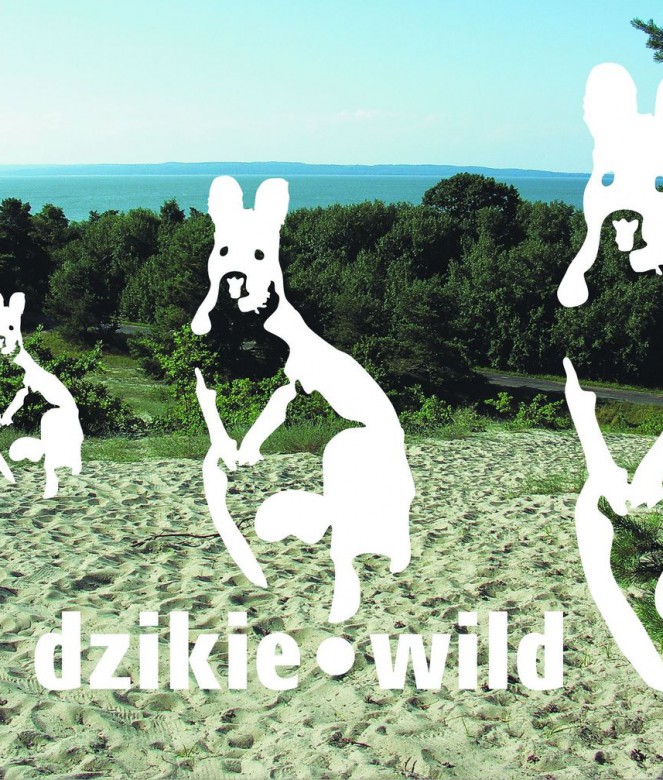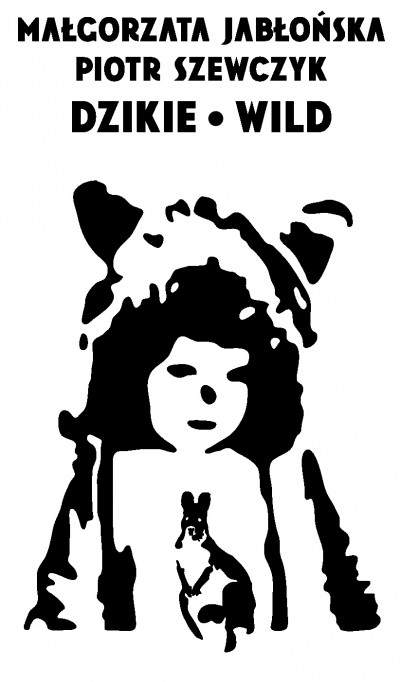Jabłońska’s earlier stories, whether realized alone or – as time went on – in collaboration with Piotr Szewczyk, were played out above all in urban settings, with themes inspired by the artist’s personal experiences: emerging from everyday life or from the social roles she played, for example, being a school teacher. The works from this period above all took the form of comics or interactive games which the artist terms computer or animated stories, in contrast to paintings which she describes on her website as hand-made stories. Małgorzata Jabłońska’s trademark came to be the geometric figures of her heroes, her warm-ironic narrative style and a refined sense of observation of the reality around her.
In the Zachęta Project Room, the artist shows from that period a work entitled Chinchilla Story in 3 Parts, 9 Images. It has the form of a comic printed on balsa panels hung in the gallery space. The ‘almost true story’ told by the artist relates to episodes recalled by both authors of the exhibition and revolves around ice-cream and nice, but wild little animals.
Together with the beginning of her cooperation with Piotr Szewczyk, a designer and computer programmer, computer software made its way into Jabłońska’s work, as did a more explorative mode of presenting stories. At the exhibition, Szewczyk shows the prototype of a toy from a number of years ago that is similar in its poetics to Jabłońska’s ‘chinchilla’: a wooden beaver with movable elements.
Małgorzata Jabłońska, in a work made together with Piotr Szewczyk, presents a spatial installation: a kind of labyrinth or opened book which you can enter inside. From the roof hang rectangles of white fabric, on which an image has been created by ironing onto them white or black figures. These are stylized silhouettes of animals, sometimes of animals and people and animals coming into interaction with each, seeking a natural contact. This has something of the feel of a heavenly garden, a rural haven, an Arcadia. Nature in the artist’s work is transformed in a way similar to Japanese woodcuts. The story told does not seem a full one. Through the approach used by the artist, however, the viewer can become a co-author of the story and take it in whatever direction their imagination leads.
Alongside the work described above is placed a project by Piotr Szewczyk that emerged in cooperation with Małgorzata Jabłońska – it was made with the exhibition Dzikie/Wild in mind and has the same title. This is a series of colour photographs thematically linked with nature shown on a monitor. White silhouettes of animals appear on them at random. The most important thing in this work is the sound effect. On the basis of the photographs, of their light and dark elements, of their colour scheme, is generated a rhythm. One of the algorithms which performs this is the famous Game of Life invented by the mathematician John Conway in 1970. The automatism of cells, the surprising modes of evolution of structures, the use of mathematic systems in the aim of the visualization of wild nature, an attempt to answer the question as to whether wildness can be measured with mathematical tools – these are just some of the possible paths for interpreting Piotr Szewczyk’s latest work.
In the gallery basement is presented an interactive installation called Notanoids prepared by Jabłońska and Szewczyk in 2009. Visitors are invited to play with little white creatures. Steered by a computer programme, receivers register each movement of the people present in the room. These movements in their turn guide the creation of sound and the behaviour of black and white smudges projected onto a wall. The work is inspired by the concept of notan in Japanese art and design. Notan means dark and light. ‘Black and white need one another, they play with one another in a game. The game is won when together they look most beautiful.’
The wildness of the title calls on us to seek in ourselves for primitive, natural instincts, for a striving towards a harmonious co-existence between people and nature. This is a postulate as old as the world itself, but equally it is one that is highly relevant today. It is no coincidence that the protection of the natural environment and the struggle for animal rights are among the contemporary moment’s most frequently discussed questions.
The authors of the project invite viewers to create for themselves a world in which different beings – people, plants, animals and creatures from the borderlands of the worlds of computer and design –peacefully coexist, creating a harmonious ecosystem.
We hope it will be beautiful and wild!

